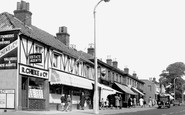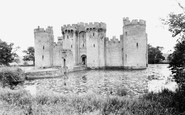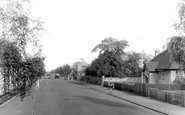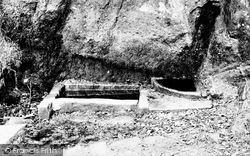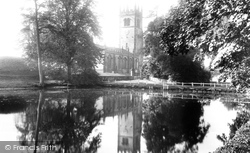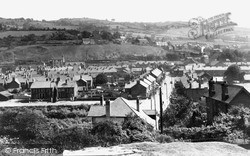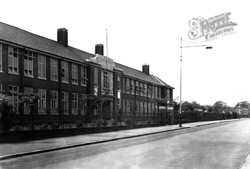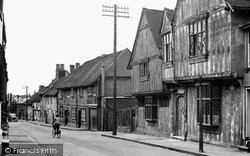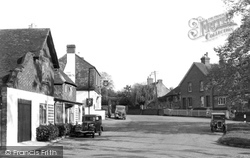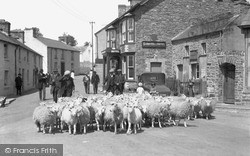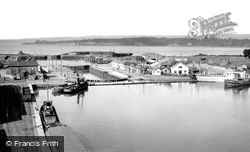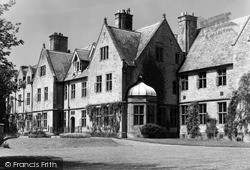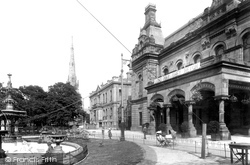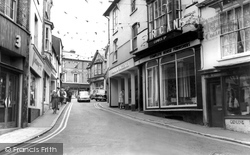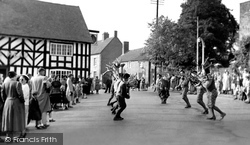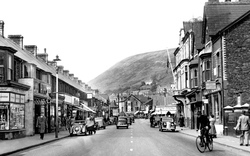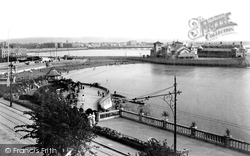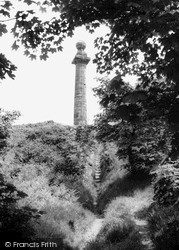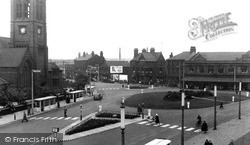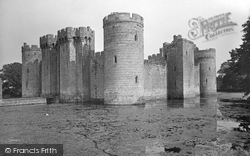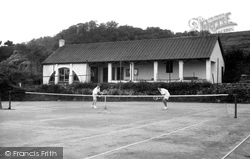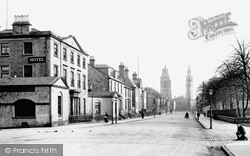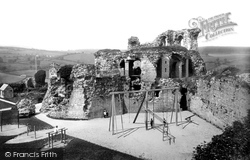Places
8 places found.
Those places high-lighted have photos. All locations may have maps, books and memories.
Photos
80 photos found. Showing results 461 to 80.
Maps
49 maps found.
Books
Sorry, no books were found that related to your search.
Memories
1,421 memories found. Showing results 231 to 240.
"Any Old Iron"
This photo brings back lots of memories for me as it shows High Road, Woodford Bridge which is where the old-fashioned ironmongers that my family owned was situated. There had been one on the site since the beginning of the ...Read more
A memory of Woodford Bridge in 1974 by
Delamere By Sid Grant
The Jewish Fresh Air Home and School was founded in 1921 by Miss Margaret Langdon, MBE, MA (1890-1980) and located at Blakemere Lane, Delamere near Norley, in the beautiful Cheshire countryside. My time spent there was from ...Read more
A memory of Delamere in 1930 by
Happy Days
I have many fond memories of Bodiam and the Castle, from when I was 1 year old in 1943, until I was 15. Along with dear Mum and my two sisters, our whole extended family on my mum's side consisting of several families would move to ...Read more
A memory of Bodiam in 1950 by
My Fading Memories
I was but a lad of 8 when my folks bundled us all off to a wide land downunder. Since 1968, Australia has been my home. I often speak of my fading memories of Queensbury, my walks through the village, living on 'The ...Read more
A memory of Queensbury in 1968 by
Wickham Bishops Born And Bred
In 1950 I was born on a cold winter's night to my mother Rosemary Jesse, at 'The Black Houses', Kelvedon Road, Wickham Bishops, built by architect, designer and socio-economic theorist Arthur Heygate Macmurdo. ...Read more
A memory of Wickham Bishops by
Newmarket Hospital
I worked in racing stables in Exeter Road. In the spring of 1960 I was injured when a yearling I was exercising suddenly reared and I 'went out the back door', narrowly missing the edge of the pavement, but hitting my ...Read more
A memory of Newmarket in 1960 by
Last Family To Live In Duntarvie Castle (Researched By Galen Bartholomew)
The Bartholomew family was the last family to live in Duntarvie Castle before it became uninhabitable, but, as my cousin, Richard Widdowson, has made some mistakes in ...Read more
A memory of Duntarvie Castle by
Four Elms From 1950
The Sandeman Family moved to Four Elms in 1950. We moved from Bexley Kent. Winnie and Richard were my parents my brother Mark had just been born in September. We moved to Wendy's bungalow, just on the corner next to the post ...Read more
A memory of Four Elms by
Ilchester Crescent
Living in Ilchester Crescent was just fantastic. Lots to do and friends to play with. I remember the shops in particular the newsagent and me following my brother to deliver newspapers in 1965, mike from Presses the ...Read more
A memory of Bedminster Down by
Expat Memories From Australia
Billy Benson here. I now live in Victoria Australia, but I grew up in Aveley and lived at 5 Crescent Walk. Loved the pictures of the local shops and the old town. My family moved to Australia in 1963. I have been back since ...Read more
A memory of Aveley by
Captions
877 captions found. Showing results 553 to 576.
During the Dissolution they were closed on the orders of Thomas Cromwell, Chief Minister to Henry VIII, in an attempt to destroy any cult following that might exist.
chancel are the tombs of some of the Fytton family, including Sir Edward (1550-1606) who became Lord President of Munster, and Mary Fytton who was a maid of honour to Elizabeth I, but was soon disgraced following
In our post-industrial age you can now follow the same road out of Risca to the Dan-y-Graig nature reserve, which is situated on land given to the Gwent Wildlife Trust by the Risca
In 1955 the Grammar School would have been in preparation for its 25th anniversary the following year.
The street is now a cul-de-sac, following the opening of the by-pass in the 1980s.
The road through the village follows the route of the Guildford to Arundel turnpike, completed in 1809. Medieval glass was also made near here in Sidney Wood.
Following the dissolution of the monasteries in the 1500s, this became the parish church for the town.
Here, farmers smartly dressed in three-piece suits follow one of the flocks to market.
In the years following the end of the second world war, John Harker Ltd built several estuarine tankers on the foreshore at Sharpness. One of them might be in the background of this picture.
Built in 1890 by Sir Thomas Jackson in limestone following the 17th-century collegiate style and blending in well with surrounding buildings.
The sign above the entrance of Cambridge Hall indicates that the picture was taken around 1901-02 following the accession of King Edward VII.
The buildings are shaped here to follow the curve of the road. The first shop on the right is now a florist. Morgans, 'Complete House Furnishers', has become the Alamo restaurant and bar.
Every year, on the first Monday after the Sunday following 4 September, the Horn Dance is performed in Abbots Bromley.
The Village 1940 Beyond Williton, our route follows the western edge of the Quantock Hills back towards Taunton.
Down by the river bank, the paviours follow the line of the medieval wharf. Behind the moat are the medieval outer defences, the inner one overlooking the outer - the battlements are 19th-century.
The opening of the steelworks was followed by the building of a chemical plant at Baglan Bay by British Petroleum.
If you follow its line, you can just see that it extends way beyond the Pavilion. In 1907 it was extended to make it nearly twice as long as it is today.
Its replacement was this column, 60 feet high and bearing the following inscription: 'This column was erected by the trustees of the Liverpool Docks, by the permission of John Shaw Leigh, Esq,
One of the new towns acquired by Cheshire following the border change in 1974, Widnes developed in the 1800s along with the new chemical industries.
The castle, at the medieval limit of navigation for the River Rother, was licensed in 1385 following French raids on Rye and Winchelsea.
The following year, interest in this already popular facility soared owing to its inclusion in a series of BBC programmes based on South Wales clubs.
The East India Harbour was completed in 1806-07, the Victoria Dock opened during the 1850s and the Albert Dock followed a decade or so later.
The castle, which dates from 1282, was left to slide into decay following its siege during the Civil War in 1645. It held out for the king, and was thereafter slighted by Cromwell's men.
Following Fairfax's rout of the royalist forces under Sir Ralph Hopton, the church was being used as a magazine and prison.
Places (8)
Photos (80)
Memories (1421)
Books (0)
Maps (49)

